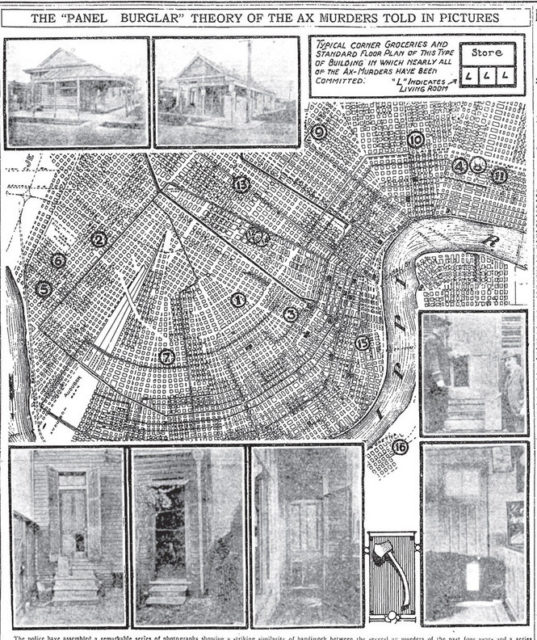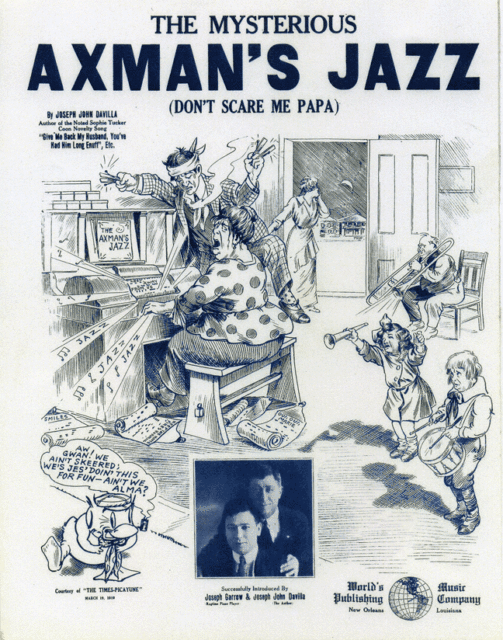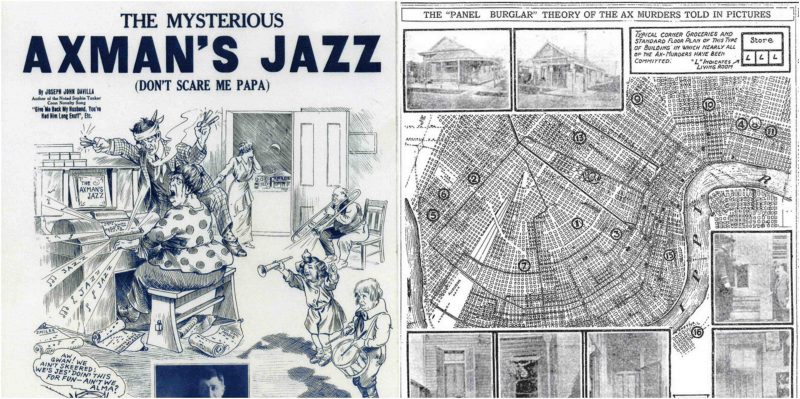Down through the centuries, there have been some rather notable serial killers. In fact, scared citizens and police forces gave these killers nicknames, most likely because these killers were never caught and identified until a much later time.
One particularly famous serial killer was at the top of his game during the 1900s in New Orleans. He was given the nickname Axeman. This man had caused some of the most gruesome and disturbing murder scenes, scaring everyone in the large city.
Axeman was known for breaking into homes in New Orleans in the middle of the night. From there, he would hack all people in the house while they were asleep. Because of this, many people did not know he was in the house, let alone the victims’ neighbors. Sadly, no one is exactly sure just how many people Axeman murdered in the height of his … hobby? Career?
What is particularly interesting is that Axeman’s nightly murders abruptly ended in October 1919. By then, at least a dozen people had been attacked, and six people were hacked to death. The Axeman was never caught, and no one knows who he is, or was. It is possible that he could still be out there living a normal life, acting like he wasn’t one of the most feared people in New Orleans. Perhaps he has already passed away, and no one even knows.

During the years 1911 and 1912, there had been several axe murders in the city. This was before the official Axeman murders. Was Axeman a copycat? Or was this before he was given a name by the scared citizens? There were several iffy newspaper articles printed throughout the time Axeman was at the height of his axe-wielding days, which was in 1918. In that same year, there was an article printed with an interview from a former police detective.
He had compared the Axeman’s attacks to some of the Italian grocers who had been murdered by an axe murderer in 1911 and 1912.
The detective mentioned that the victims were Italian because he said that it could have been the work of the mafia. The first victim was named Cruti; the other two were Rosetti and his wife. From there was a third set of victims named the Schiambras who were husband and wife. The detective said that he was wondering if it was a serial killer or if they were murders caused by The Black Hand, which was a mafia group who had been responsible for other killings in New Orleans five years before that.
On May 22, 1918, Jake and Andrew Maggio were sleeping in their room which was adjoined to the room of their brother Joseph and his wife, Catherine. Jake woke up, hearing a groan from Joseph’s room. Jake woke his brother Andrew, and the two went to Joseph’s kitchen (having adjoined homes). They noticed that a wooden panel was removed near the kitchen door.
The brothers entered through the kitchen and walked past the bathroom, to find Joseph laying on his bed with his legs dangling off the bed. Catherine’s body was draped across his. Joseph was still alive and had attempted to get out of bed, blood seeping from his head wounds. Joseph saw his brothers before taking his last breath.
Police were called to the home the next day, searching both homes and the grocery store the brothers owned. Police found Joseph’s safe unlocked and empty, but there was money and jewelry left in the room the couple was murdered in. Police ruled out robbery as a motive for murder.
In a bathroom, police found the Axeman’s dirty clothes, seeing that he changed into clean clothes before leaving. The Axeman also left his axe sitting in the bathtub. He had attempted to wash it, but some blood still remained. There were two different reports on where the axe was left – some say under the house, and others say near the rear doorstep.
Police found a straight razor in the bedroom. They believed that the Axeman struck Joseph with the axe, breaking his skull. He then turned to Catherine and struck her in the head. He then took the razor and slashed her neck from ear to ear, nearly severing the head entirely. He then struck her once more in the face and head with his axe.

Police found that the razor belonged to Andrew, who owned a barbershop. He said he had brought the razor back to his home to fix it, but police didn’t believe him and arrested him two days later. Thankfully, police found Andrew innocent a few days later and released him from jail. That is when the police found a message a block down from the house that stated: “Mrs. Maggio will sit up tonight just like Mrs. Toney.”
Officials had wondered if that message had hinted that the murders that night had coincided with the 1911 axe murder of Tony Schiambra. Could this be the beginning of a long string of axe-related murders? Perhaps by the same man?
